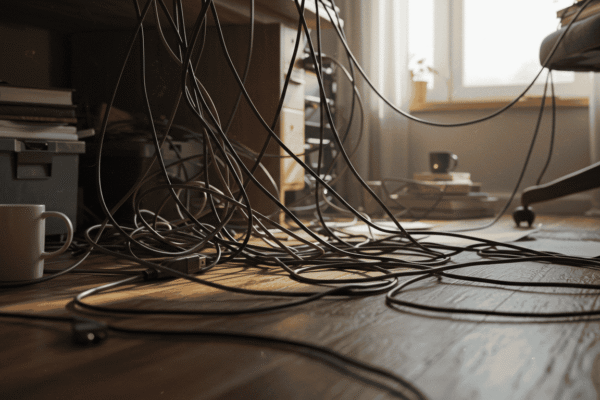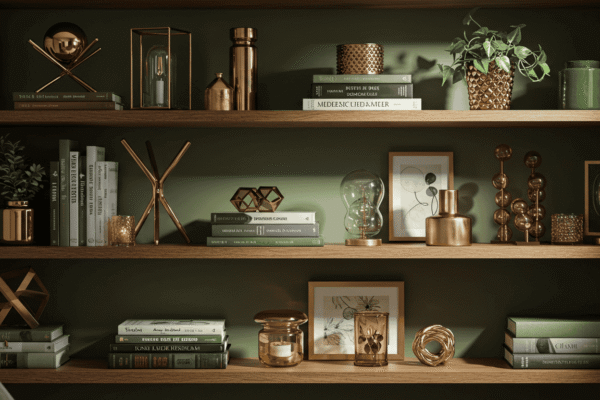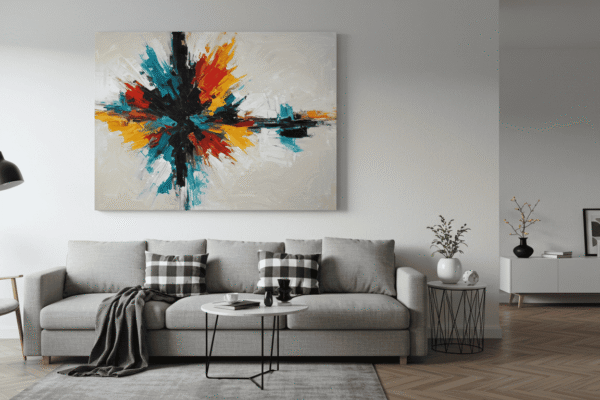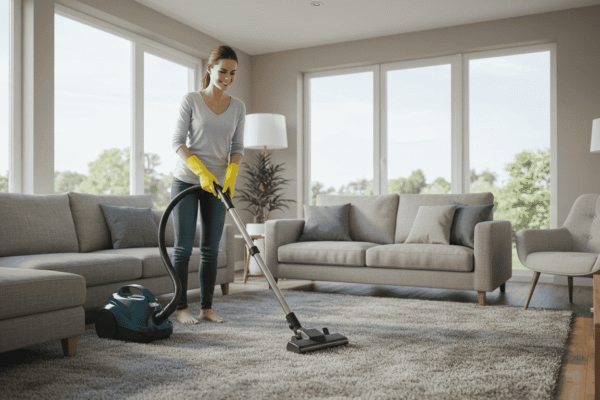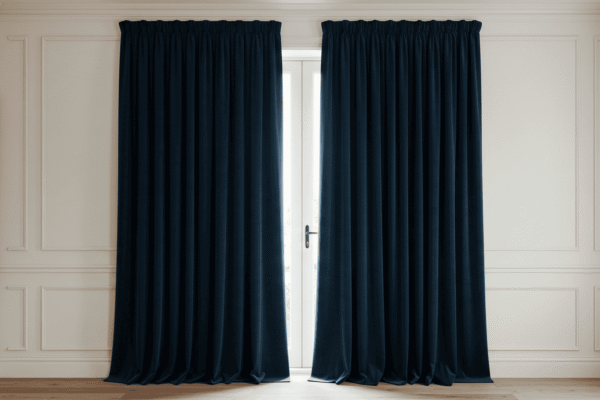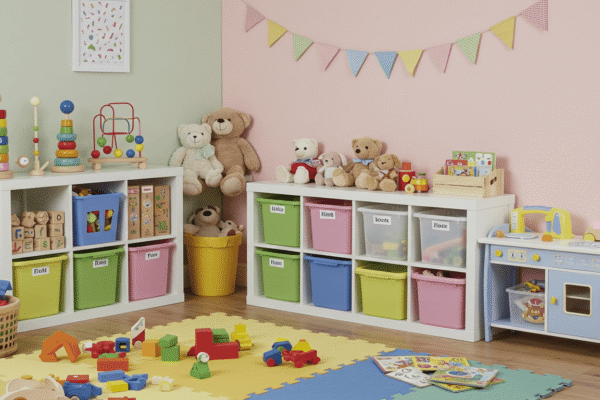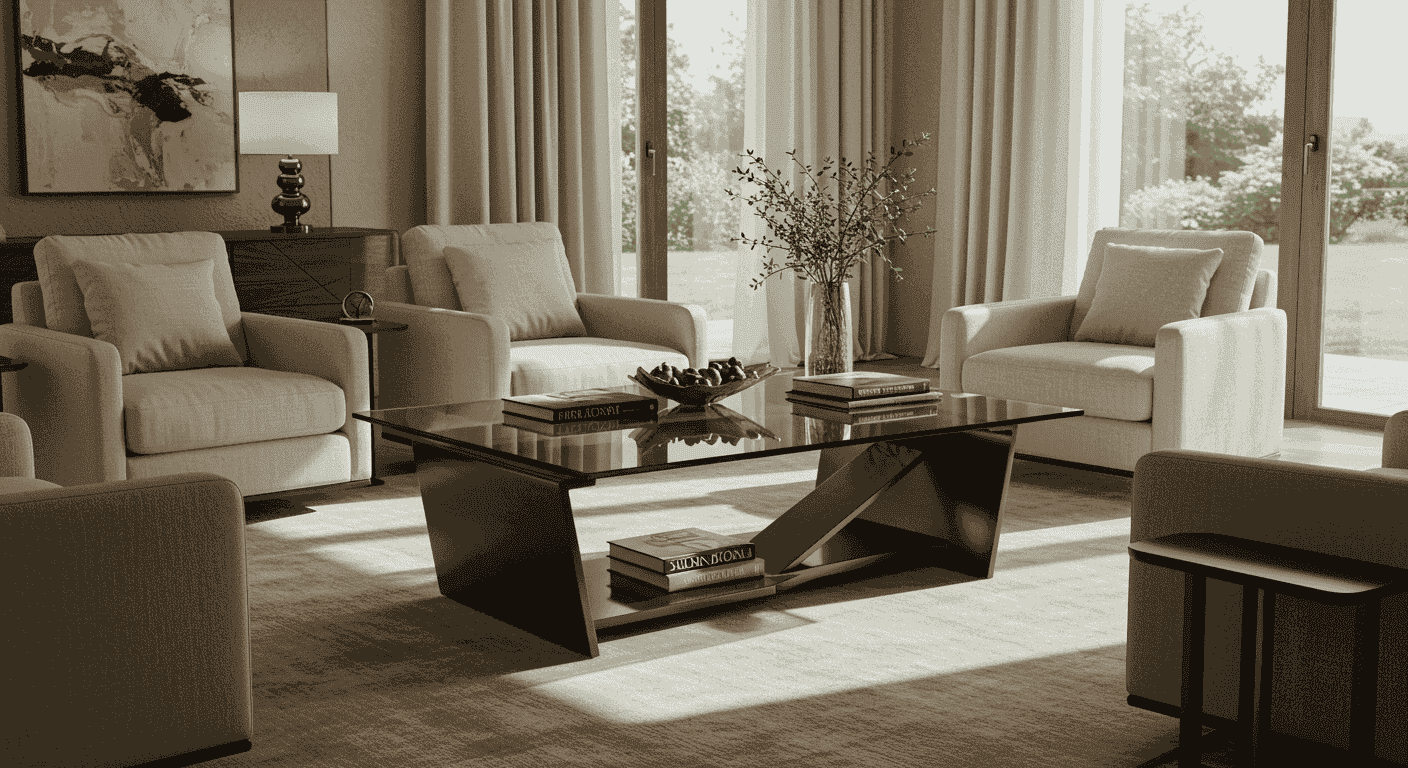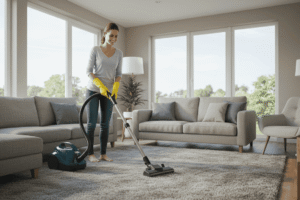Coffee table is one of the most important pieces of living room furniture, yet choosing the perfect one for your space can feel overwhelming. With so many sizes, shapes, and materials available, it’s essential to understand how to find a coffee table that fits both your style and practical needs. In this guide, we’ll walk you through everything from measuring your room to picking the right coffee table dimensions, shape, and functionality—helping you create a balanced and inviting space you’ll love. Whether you’re after a sleek minimalist look or a cozy multi-functional centerpiece, these tips will make your decision easy and enjoyable.
1. Understanding Your Space: The First Step to Picking a Coffee Table
Choosing the perfect coffee table starts with understanding your available space. This is crucial because the right size and placement can enhance the flow and comfort of your living room. Before making any decisions, take time to assess the room’s dimensions and layout. This will help you visualize where the table will sit in relation to other pieces of living room furniture and ensure it complements rather than overwhelms your space.
Assessing Room Size and Layout
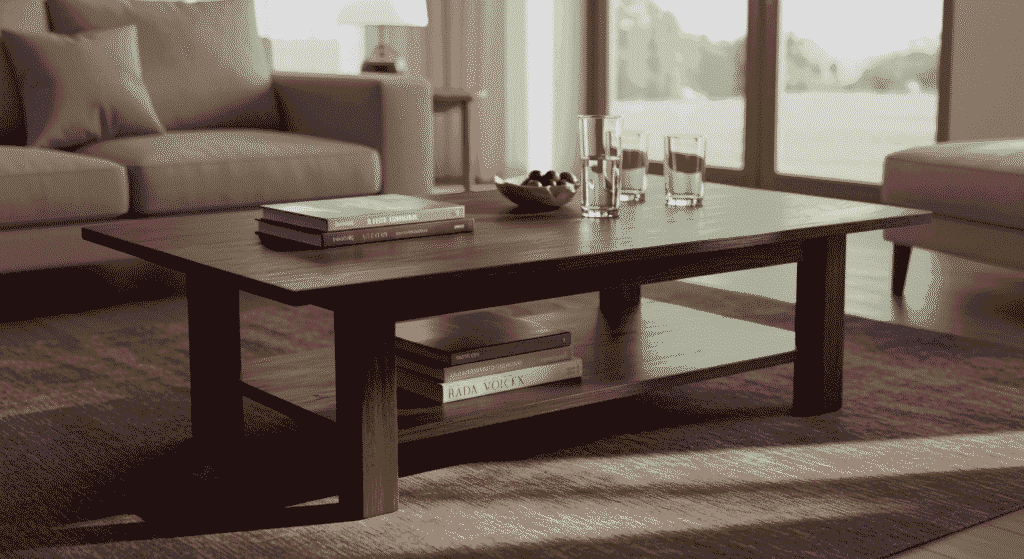
Begin by measuring the length and width of your living room, paying special attention to the area where you want to place your coffee table. Use painter’s tape or paper cutouts on the floor to map out potential table sizes. This simple visualization helps avoid buying a table that’s too large or too small. Remember, you want enough clearance for easy movement—ideally at least 18 inches between the coffee table and surrounding furniture.
Avoid overcrowding by keeping walkways clear and making sure the table doesn’t block access to other furniture or room features. If your living room is compact, consider smaller or multi-functional tables to maximize both style and usability.
Sofa and Coffee Table Relationship: Finding the Perfect Match
The relationship between your sofa and coffee table is key to creating a harmonious and functional setup. Ideally, your coffee table should be about two-thirds the length of your sofa. This proportion maintains balance and ensures the table feels connected to the seating area.
In terms of height, the coffee table should be level with or slightly lower than the seat height of your sofa—usually around 16 to 18 inches tall. This makes reaching for items comfortable without straining.
To make these guidelines easier to follow, refer to the visual table below which outlines recommended height and distance ratios between sofas and coffee tables for different room sizes:
| Sofa Length | Ideal Coffee Table Length | Sofa Seat Height | Ideal Coffee Table Height | Clearance Distance |
|---|---|---|---|---|
| Up to 72 inches | 48 inches | 17-19 inches | 16-18 inches | 18 inches |
| 72-90 inches | 48-60 inches | 18-20 inches | 16-18 inches | 18 inches |
| Over 90 inches | 60 inches | 19-21 inches | 16-18 inches | 18 inches |
Using these guidelines will help you select a coffee table that feels like a natural extension of your sofa, optimizing both comfort and style.
2. Coffee Table Dimensions: Size Really Does Matter
Selecting the right coffee table dimensions is essential to ensure your table fits perfectly within your living space and complements your existing furniture. The size of your coffee table affects not only its appearance but also its functionality. Too big, and it can overwhelm your room; too small, and it might feel out of place or underutilized. Understanding typical size ranges will help you make an informed choice that balances style and practicality.
Standard Sizes and How to Choose What Fits
Most coffee tables fall within standard dimensions that suit a variety of room sizes and layouts. Generally, the length ranges from 36 to 48 inches, the width from 18 to 30 inches, and the height between 16 to 18 inches. When selecting a table, consider the overall room size and how much space you want around the table for movement and other furniture.
Here’s a quick reference guide to help you visualize suitable sizes for different room types:
| Room Size | Ideal Coffee Table Length | Ideal Width | Ideal Height |
|---|---|---|---|
| Small (Under 150 sq. ft.) | 36-40 inches | 18-20 inches | 16-18 inches |
| Medium (150-300 sq. ft.) | 40-48 inches | 20-24 inches | 16-18 inches |
| Large (Over 300 sq. ft.) | 48-54 inches | 24-30 inches | 16-18 inches |
Use this table as a starting point but remember that your specific layout and needs may influence the final choice.
When to Go Big — and When to Keep It Compact
Choosing between a large or small coffee table depends on your room’s layout and how you use the space. Larger tables work well in spacious rooms with ample seating, providing a central surface for decor, drinks, or snacks. They create a sense of balance and can anchor the seating arrangement.
On the other hand, compact coffee tables suit smaller living rooms or apartments where space is limited. They keep the room feeling open and allow for easier movement. Smaller tables are also versatile—they can be moved around or paired with side tables for flexibility.
Pros of Large Coffee Tables:
- More surface area for decor and practical use
- Visually anchors a large seating area
- Often includes additional storage options
Cons of Large Coffee Tables:
- Can overcrowd small rooms
- May restrict foot traffic flow
Pros of Small Coffee Tables:
- Ideal for tight spaces
- Lightweight and easy to reposition
- Keeps the room feeling open and airy
Cons of Small Coffee Tables:
- Limited surface area
- May feel disconnected from larger seating groups
Understanding these factors helps you select a coffee table size that perfectly suits your living room’s scale and your lifestyle.
3. Shape Matters: Which Coffee Table Shape Suits Your Style and Space?
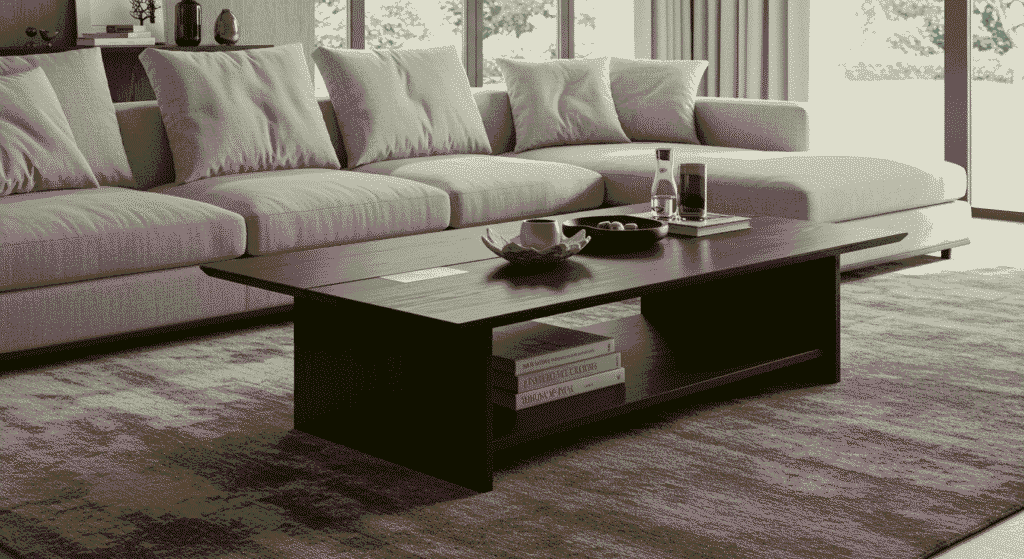
Choosing the right coffee table shape is just as important as selecting the size. The shape influences the flow of your room, the safety of your space—especially if you have kids or pets—and the overall aesthetic you want to achieve. Each shape brings unique benefits and challenges, so understanding these can help you make a choice that fits your lifestyle and enhances your living room.
Pros and Cons of Popular Shapes (Round, Square, Rectangular, Oval)
- Round Coffee Tables
Pros: Soft edges improve safety, encourage conversation, and enhance flow in small or tight spaces. Great for homes with children or pets.
Cons: May offer less surface area and storage compared to rectangular tables. - Square Coffee Tables
Pros: Balanced and symmetrical, ideal for smaller seating arrangements or pairing with matching chairs.
Cons: Can feel boxy in larger rooms or with sectional sofas. - Rectangular Coffee Tables
Pros: Classic shape that fits well with most sofa styles and larger living rooms. Provides ample surface area.
Cons: Sharp corners can be hazardous in busy households. May disrupt flow in tight spaces. - Oval Coffee Tables
Pros: Combines the flow-friendly curves of round tables with more surface area. Adds a softer look without sacrificing functionality.
Cons: Less common shape, which can make finding options more challenging.
| Shape | Ideal Room Type | Safety | Style Flexibility | Surface Area |
|---|---|---|---|---|
| Round | Small or busy spaces | High | Moderate | Moderate |
| Square | Compact seating groups | Moderate | Moderate | Moderate |
| Rectangular | Large rooms, sofas | Low | High | High |
| Oval | Medium rooms | High | Moderate | Moderate-High |
This comparison can guide you toward a shape that balances aesthetics with practical needs.
Unconventional Shapes and When to Use Them
Beyond the traditional shapes, geometric, nested, or modular coffee tables offer exciting alternatives for those looking to add personality or flexibility to their space.
- Geometric Coffee Tables: Bold shapes like hexagons or trapezoids create focal points and add a modern edge. Best suited for contemporary or eclectic interiors.
- Nested Coffee Tables: Sets of smaller tables that fit together, offering versatility in use and easy rearrangement. Perfect for multi-use spaces or entertaining.
- Modular Coffee Tables: Customizable pieces that can expand, contract, or be reconfigured. Ideal for adaptable living rooms or those with changing needs.
These unconventional options are perfect for making a statement while optimizing your living space.
4. Choosing the Right Material for Your Coffee Table
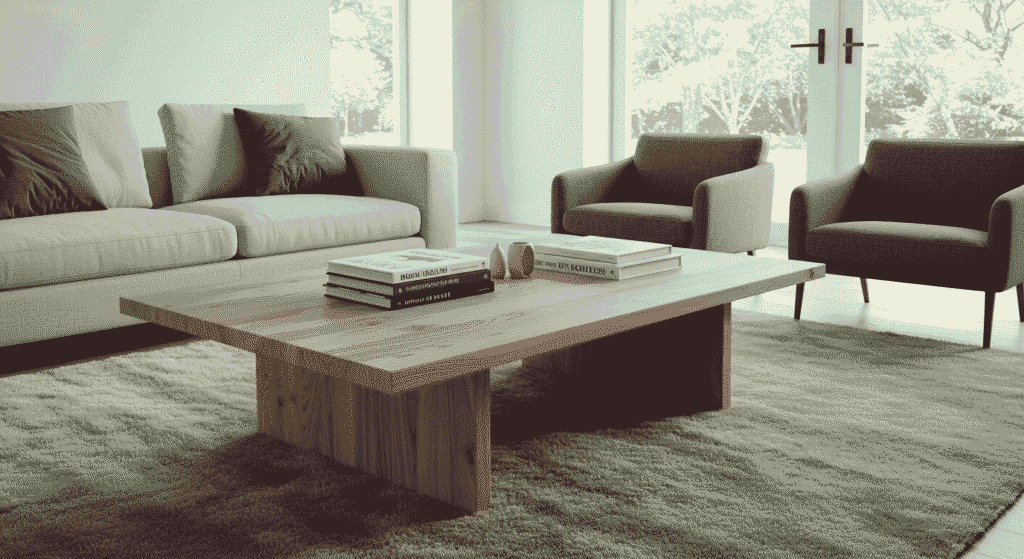
The material of your coffee table plays a huge role in determining its durability, visual appeal, and how well it fits into your daily life. From natural textures to sleek finishes, each material offers a different vibe and set of maintenance needs. Whether you’re looking for something practical for a high-traffic home or a statement piece for a styled space, choosing the right material ensures your coffee table performs well and looks great for years to come.
Wood, Glass, Metal, and More — What Fits Your Lifestyle?
Each coffee table material comes with its own advantages and drawbacks depending on how you use your space and your interior preferences.
- Wood: A timeless classic that works across all styles—from rustic to modern. It’s durable and warms up any space but may require occasional polishing or refinishing. Susceptible to scratches and moisture if not properly sealed.
- Glass: Offers a clean, airy look and makes small rooms feel larger. It’s easy to clean but can show fingerprints and dust quickly. Less ideal in homes with small children due to breakability and sharp edges.
- Metal: Sleek and industrial, metal tables are often low-maintenance and highly durable. However, they can feel cold or overly utilitarian in softer-styled spaces unless balanced with other textures.
- Stone (e.g., marble): A high-end, luxurious option that adds weight and drama. It’s visually stunning but can be heavy and prone to staining if not properly sealed.
- Rattan or Woven Materials: Great for boho or coastal interiors, they add texture and charm. Less durable over time and usually better as accent or occasional tables.
Consider the following when choosing material:
- Do you have pets or kids?
- Do you eat or work at your coffee table?
- Are you willing to maintain it regularly?
Combining Materials for a Custom Look
If a single material doesn’t check all your boxes, consider a mixed-material coffee table. These combinations add depth and visual interest to your living room, and they allow you to blend function with personality.
- Wood and metal: A popular mix that balances warmth and strength—ideal for industrial, farmhouse, or transitional styles.
- Glass and wood: Offers a blend of modern and natural elements. The glass top keeps it visually light, while the wooden base grounds the design.
- Stone and metal: Luxurious with a contemporary edge. Stone tops provide elegance while metal frames offer structure.
Combining materials also allows you to echo other elements in your room—such as metal legs matching a lamp base or a wood finish reflecting your flooring. This kind of subtle cohesion can make your design feel effortlessly polished.
5. Storage and Functionality: More Than Just a Surface
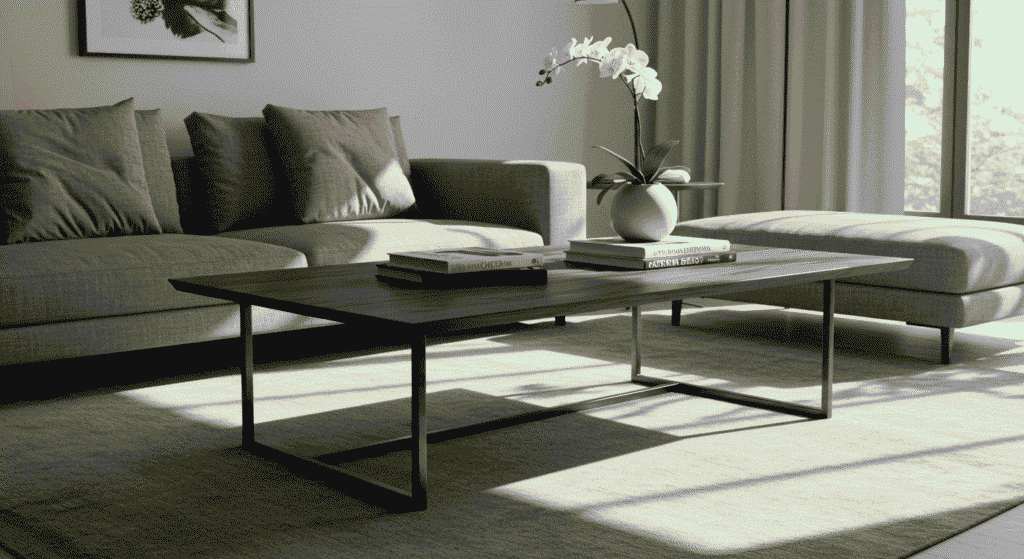
A coffee table can do much more than just hold your coffee cup or magazines. In today’s homes, where space is often limited, a functional table with built-in storage or convertible features can greatly improve organization and efficiency. When choosing a coffee table, considering storage and versatility can help you maximize your living area without sacrificing style.
Coffee Tables with Built-in Storage: Benefits and Drawbacks
Many coffee tables come equipped with storage options like drawers, shelves, or lift-top compartments. These features provide convenient places to stash remote controls, books, blankets, or other everyday items, keeping your living room tidy.
- Drawers: Offer hidden storage, ideal for small items you want out of sight. They keep the surface clean but can add bulk to the table’s design.
- Shelves: Open shelves provide easy access and display space for books or decor but can look cluttered if not organized.
- Lift-tops: These tables combine storage with functionality by allowing the tabletop to lift up, creating a workspace or dining surface. They’re perfect for multi-use living rooms but may be heavier and more expensive.
| Storage Type | Storage Capacity | Style Impact | Ease of Access | Best For |
|---|---|---|---|---|
| Drawers | Medium | Moderate (adds bulk) | Easy | Keeping clutter out of sight |
| Shelves | Large | Low (open design) | Very Easy | Display items and quick access |
| Lift-tops | Medium | High (functional) | Moderate | Small spaces needing flexibility |
Choosing the right storage option depends on your priorities between style, convenience, and the amount of storage you need.
Multi-functional Coffee Tables for Modern Living
In smaller or multifunctional homes, multi-functional coffee tables are game-changers. These tables often convert, expand, or combine several uses into one piece, allowing you to make the most of limited space.
Look for features like:
- Tables that extend or fold to accommodate guests or extra surface space.
- Nesting tables that can be separated or stacked as needed.
- Tables with hidden compartments that double as seating or footrests.
When selecting these options, consider your daily routine and how often you’ll use the additional functions. Multi-functional coffee tables help keep your living room flexible and organized, blending practicality with thoughtful design.
6. Design Styles and How to Match Your Coffee Table to Your Home
Your coffee table is a key element in tying together your living room’s overall look and feel. Matching its design style to your existing decor creates harmony and enhances the space’s personality. Whether you prefer sleek modern lines or cozy rustic charm, choosing a coffee table that fits your style helps your living room feel intentional and well-curated.
From Minimalist to Rustic: Picking a Style That Fits Your Decor
Different design styles have distinct coffee table characteristics that complement their unique aesthetics:
- Minimalist: Clean lines, simple shapes, and neutral colors dominate. Tables are often made of metal, glass, or light wood with little to no ornamentation.
- Modern: Sleek, often geometric designs with smooth finishes like lacquer or metal. Emphasis on function and form with bold yet simple silhouettes.
- Rustic: Embraces natural wood textures, distressed finishes, and sturdy construction. Coffee tables in this style often feature chunky legs and warm, earthy tones.
- Industrial: Combines raw metal and reclaimed wood for a utilitarian look. Tables are robust and often include metal accents or visible hardware.
- Scandinavian: Light wood, minimalist design, and soft, rounded edges characterize this style. Focus is on functionality and cozy simplicity.
- Bohemian: Eclectic and colorful, with natural materials like rattan, wicker, or carved wood. Often paired with textiles and layered decor.
Matching your coffee table to your decor style enhances cohesion and helps create a welcoming atmosphere.
Balancing Statement Pieces with Functional Furniture
A coffee table can be a bold statement or a subtle complement, but balancing these roles is essential. If you choose a striking, eye-catching design, keep surrounding furniture simpler to avoid visual clutter. Conversely, if your living room features bold patterns or textures, a more understated coffee table will create balance.
Consider the scale of your table as well—oversized tables in small rooms can overwhelm, while tiny statement pieces in large spaces may get lost. Think of your coffee table as the bridge between function and style, anchoring your seating area while reflecting your personality without overpowering the room.
7. Budgeting for Your Coffee Table: Quality vs. Price
Finding the right coffee table means balancing your budget with your expectations for quality and design. While it’s tempting to go for the cheapest option, investing wisely can ensure you get a piece that lasts and enhances your space for years. Understanding what influences price helps you make smarter choices tailored to your needs.
When to Invest and When to Save
Several factors affect the price of a coffee table:
- Materials: Solid wood and natural stone tend to cost more than engineered wood or glass. Metals with special finishes can also increase the price.
- Craftsmanship: Handcrafted tables or those with intricate details typically come at a premium compared to mass-produced pieces.
- Design: Unique, designer, or custom-made tables usually carry higher price tags due to exclusivity and originality.
Invest in a high-quality table if it’s a central piece in your living room or if you want something durable that can withstand heavy daily use. On the other hand, if your needs are temporary or you like to change decor often, opting for affordable, stylish options might make more sense.
Tips for Finding a Coffee Table That Lasts
To ensure your coffee table stands the test of time, focus on:
- Material durability: Look for hardwoods like oak or maple, or metal frames with corrosion-resistant finishes. Avoid fragile materials if you have kids or pets.
- Construction quality: Check joints and connections—solid dovetail joints or sturdy welds indicate strong build quality.
- Finish: A good finish protects the table from scratches, stains, and moisture. Make sure the surface feels smooth and well-sealed.
- Weight and stability: Heavier tables tend to be sturdier and less likely to tip or move unintentionally. Test stability before buying.
Taking time to evaluate these factors ensures you get a coffee table that combines style with longevity, making your investment worthwhile.
8. Final Checklist: How to Make the Right Coffee Table Choice
Choosing the perfect coffee table can feel overwhelming, but a clear checklist simplifies the process. By reviewing key factors like size, shape, material, style, and functionality, you can confidently select a table that fits your space and lifestyle. This final step ensures you make a choice you’ll be happy with for years to come.
Quick Quiz/Table to Help You Decide
Use the following checklist as a guide to narrow down your options based on your needs:
| Question | Consideration | Your Preference |
|---|---|---|
| What is the size of your living space? | Small, Medium, Large | |
| Which shape suits your room flow? | Round, Square, Rectangular, Oval | |
| What materials fit your lifestyle? | Wood, Glass, Metal, Mixed | |
| What style matches your decor? | Minimalist, Rustic, Modern, etc. | |
| Do you need built-in storage? | Drawers, Shelves, Lift-tops | |
| Is multi-functionality important? | Convertible, Nesting, Expandable | |
| What is your budget range? | Low, Medium, High |
Filling out this table can help clarify priorities and keep your search focused.
Tips for Visualizing Your New Coffee Table Before Buying
Before making a purchase, take advantage of tools that help you visualize how your chosen coffee table will look in your space:
- Mood boards: Compile images of coffee tables, color palettes, and other furniture to see how styles and materials interact.
- Room planner apps: Use digital tools that let you input room dimensions and virtually place furniture pieces to test different layouts and sizes.
- Augmented reality (AR) apps: Some apps allow you to “place” a virtual coffee table in your real room via your smartphone camera for a realistic preview.
These methods reduce guesswork and help you feel confident that your new coffee table will complement your home perfectly.
Choosing the Perfect Coffee Table for Your Home
Choosing the perfect coffee table is about balancing style, size, material, and functionality to create a piece that complements your space and fits your lifestyle. By understanding your room’s needs, exploring different shapes and materials, and considering practical features like storage and multi-functionality, you can find a coffee table that is both beautiful and useful. With careful planning and visualization, your new coffee table will not only enhance your living room’s look but also become a cherished centerpiece for years to come.

